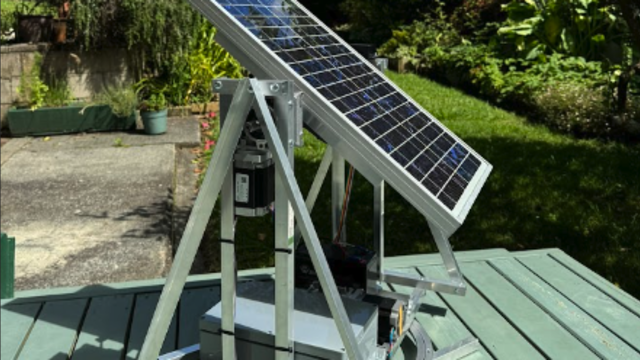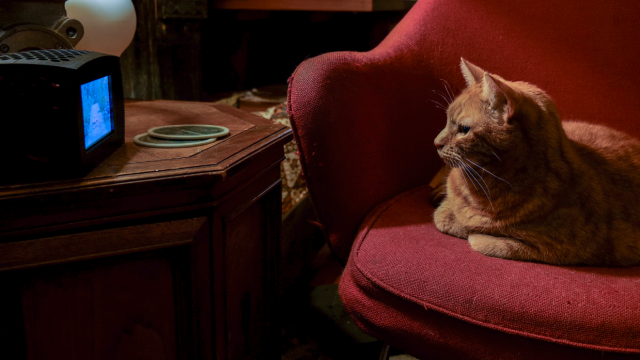We ordered an 8 × 32 pixel flexible display for £25.61 from AliExpress store Ledworld. That’s 256 LEDs. The first thing you need to realise when using this number of LEDs is that you’re not going to be able to use a simple power supply. At full brightness, Each LED uses up to 20 mA of current, and each pixel has three LEDs (a red, green, and blue), so that’s potentially over 15 amps! Of course, this is the maximum current if you’ve got all your LEDs on white, at maximum brightness. If you know that you’re not going to hit this, you may be able to get away with a lot less. Even with them all on full brightness of a single colour (red, green, or blue), this comes down to five amps.
Danger!
Our screen came with three points to supply power, which should reduce the amount of current through each point. All three are connected on the PCB though, so you shouldn’t connect them to different power supplies, just three times from the same one. This will reduce the resistance between the power supply and the LEDs. We do have some concerns about the quality of the joints joining the leads onto the PCB. The wire around the soldered blobs seemed prone to fraying.

We wouldn’t be comfortable using this display at a high current because of this fraying, and the potential fire risk this entails. That’s not to say that there isn’t a safe way of using these displays (after all, anything sets on fire if you put enough current through it). There are plenty of applications where you can use this sort of display without using the high current levels that could cause risks – if you don’t need to illuminate all the LEDs, or don’t need them all bright, you can run this safely. Make sure you’re familiar with the issues before going down this route.
If this screen isn’t big enough for you, it does come with a connector to daisy-chain multiple ones together (in this case they can be powered by separate power supplies, as long as you tie the grounds together).
As well as power, it takes memory to run these as the microcontroller has to be able to manipulate the graphics data and send it out. You need three bytes of RAM per pixel, so our screen will use 768 bytes of RAM. An Arduino Uno has 2kB of RAM, so there’s enough to fit our screen in, provided we don’t need too much additional memory.
Our screen came on a flexible PCB, but had no specifications attached, so we don’t know how tight it’s supposed to bend before breaking, or how many times it’s supposed to withstand bending. It creaks a little while bending, so we suspect the best answer to the above questions is not very tight, and not very often, however ours didn’t actually break during our testing.
Addressable RGB LEDs are a great way of making your builds stand out. Generic WS2812B LEDs can be cheap, but come with no support or documentation, and are of variable quality – for experienced makers, this may not be a problem but it might lead to confusion for beginners. It’s best to start small to make sure you know what’s going on before diving into a display this big. While it’s great to get cheap bits, the extra money on a reputable manufacturer may be worthwhile if you need support or parts to handle high currents.







